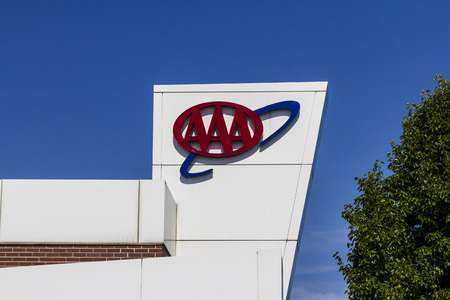AAA Study Reveals Top 3 Teen Driving Mistakes
March 29, 2017 | Category: Automobile Accidents, Personal Injury | ShareEven though teenagers in the United States drive less than most of the other age groups, the number of crashes and crash deaths are disproportionately higher, according to IIHS (Insurance Institute for Highway Safety). When looking at the numbers, the fatal crash rate per mile driven for 16-19 year-olds is nearly 3 times the rate as that for drivers age 20 and above.
 In a 2016 AAA Foundation study, the foundation outlined the dangerous driving mistakes teenagers make, and offered advice on how to prevent them. It found speeding, distraction, and poor visual scanning are the top three mistakes for new teenage drivers.
In a 2016 AAA Foundation study, the foundation outlined the dangerous driving mistakes teenagers make, and offered advice on how to prevent them. It found speeding, distraction, and poor visual scanning are the top three mistakes for new teenage drivers.
- Speeding
Among crashes attributed to a critical teen driver error, 21 percent of serious teen driver crashes were due to driving too fast for road conditions. Speeding remains one of the top mistakes teens make behind the wheel. Of the nearly 14,000 fatal crashes involving teen drivers over the last five years, more than 4,200 involved speeding. There is clear evidence that young drivers speed much more at night and in the presence of their friends, so GDL laws that place night-time and passenger restrictions on newly-licensed drivers take on particular importance, according to the study.
- Distraction
Distraction was a key factor in 58 percent of crashes involving drivers ages 16 to 19, according to an analysis of video footage of 1,691 moderate-to-severe crashes 6 seconds before they occurred.
Phones and texting - Distracted driving activities include things like using a cellphone, texting, and eating. Using in-vehicle technologies (such as navigation systems) can also be sources of distraction, according to the CDC (Centers for Disease Control).
The AAA Foundation for Traffic Safety study found 68 percent of teen drivers reported talking on a cellphone while driving. Talking on a hand-held cellphone while driving is banned in 14 states and the District of Columbia (D.C.). The use of all cellphones by novice drivers is restricted in 37 states and the D.C. Text messaging is banned for all drivers in 46 states and the D.C. In addition, novice drivers are banned from texting in Missouri and Texas. Florida does not ban cellphone use for adults or young drivers; however texting is banned.
Passengers - A study jointly produced by State Farm Insurance and The Children’s Hospital of Philadelphia revealed that passengers can be deadly distractions for teen drivers.
- Poor Visual Scanning
Among crashes with a teen driver, 21 percent occurred due to a lack of scanning that is needed to detect and respond to hazards. Scanning includes:
- Looking ahead for signs of trouble.
- Watching the brake lights of cars in order to start braking early if you see traffic ahead of you slowing down.
- Checking the space between your car and vehicles in the lane next to you.
- Using your rear-view and side view mirrors.
- Checking behind you before you change lanes, slow down quickly, back up, or drive down a long or steep hill.
How can parents and drivers’ education help?
Past research shows that teens with parents who impose stricter driving limits reported fewer crashes and traffic violations. AAA recommends parents stay actively involved in coaching their teens through the learning-to-drive process by:
- Having conversations early and regularly about the dangers of speeding and distraction.
- Taking the time to practice driving with their teens in varying conditions.
- Adopting and enforcing a parent-teen driving agreement that sets family rules for the road.
- Leading by example and minimizing distractions and speeding when they are driving.
AAA also recommends that teens preparing for the responsibility of driving should enroll in a driver education program that teaches how to avoid driver distraction and other safety skills. Resources to help parents choose a class and coach their teen through the learning-to-drive process can be found on AAA’s website http://TeenDriving.AAA.com
“Accidents involving new teen drivers are difficult for the teen driver, his/her families, and others on the road. New drivers need assistance before, and after, receiving their licenses. We at Spivey Law Firm, Personal Injury Attorneys, P.A. recommend that parents and guardians take the time to help their new drivers prepare for driving by taking advantage of the tips offered by the AAA website, which link is above,” said Naples Personal Injury Attorney, Randall Spivey.
Naples Personal Injury Attorney, Randall L. Spivey is a Board Certified Trial Attorney – the highest recognition for competence bestowed by the Florida Bar and a distinction earned by just one (1%) percent of Florida attorneys. He has handled over 2,000 personal injury and wrongful death cases throughout Florida. For a free and confidential consultation to discuss your legal rights, contact the Spivey Law Firm, Personal Injury Attorneys, P.A., in Lee County at 239.337.7483 or toll free at 1.888.477.4839, or by email to Randall@SpiveyLaw.com. Visit SpiveyLaw.com for more information. You can contact Spivey Law Firm, Personal Injury Attorneys, P.A.in Charlotte County at 941.764.7748 and in Collier County 239.793.7748.

